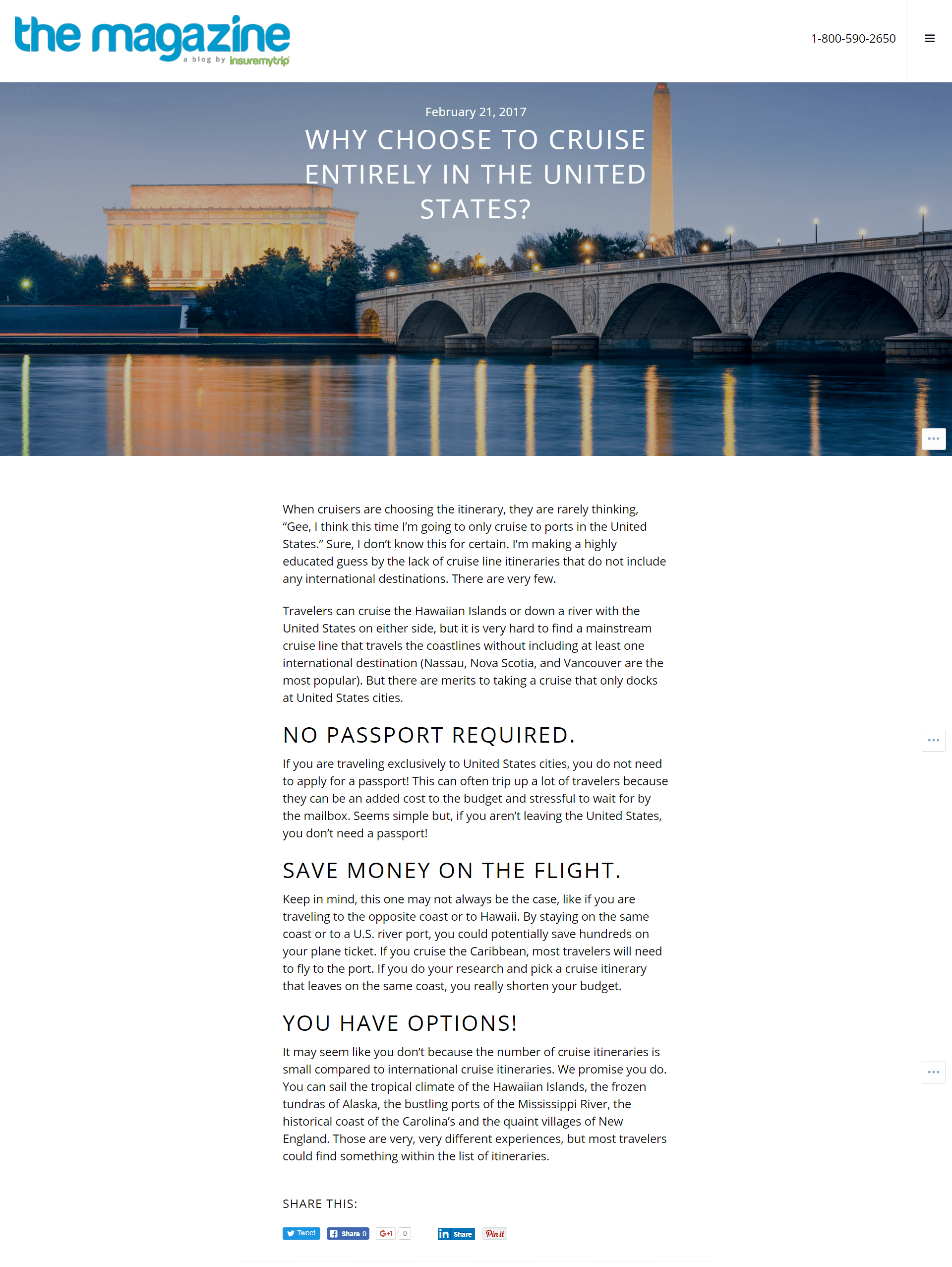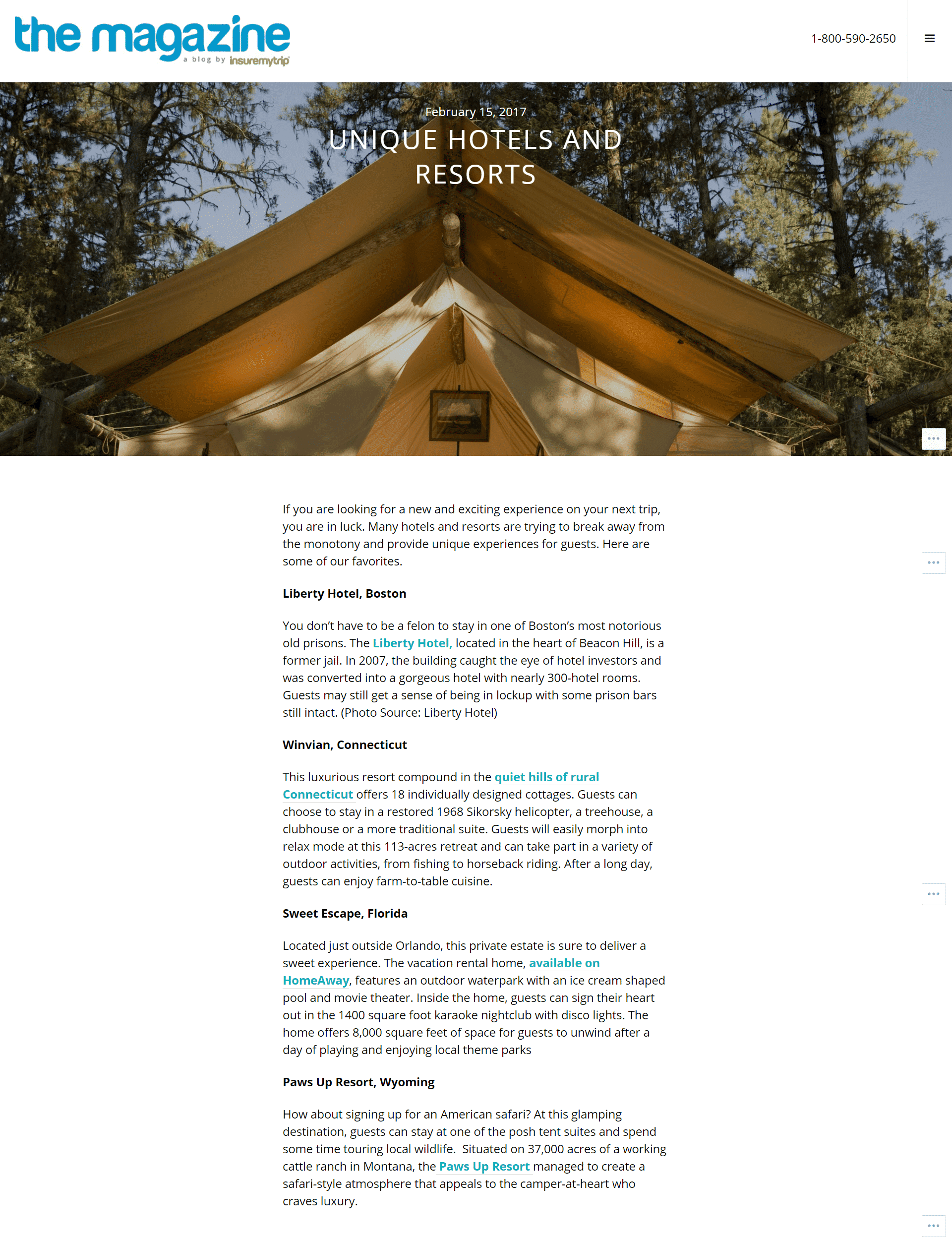Give it to Me Straight: Why Isn’t My Business Blog Working?
by Aden Andrus • February 21, 2017
As Disruptive Advertising‘s resident content guru, I often get asked, “Why isn’t my client’s business blog working?”
It’s a great question. Typically, the blogs look great on paper. They adhere (sometimes with almost religious fervor) to the blogging basics: write consistently, do keyword research, include a header image, etc.
But, at the end of the day, all that blogging doesn’t seem to drive much value for their business.
Their blogs don’t get much traffic, drive fewer leads and even fewer sales. The question is, why? Why don’t they get the results they see all the big blogs raving about? What is keeping them from achieving business blogging bliss?
Why isn’t their blog working?
Odds are, if you’re running a business blog, you’ve probably asked yourself these questions before. Now, I don’t have all the answers, but after spending countless hours reviewing business blogs and helping them turn things around, I’ve noticed that most business blogs struggle with a few basic problems.
In this article, we’re going to take a look at a classic example of these problems and why these issues prevent business blogs from delivering on their potential. Ready? Let’s dive in.
Case in Point
As a reference point, let’s take a look at one of the hottest blogging markets out there: the travel industry. These days, travel is a big industry in general and as a result, there are thousands of travel blogs out there.
If you happen to be a business in the travel industry, having a blog would seem to make a lot of sense. There’s a lot of interest and you can use that interest to drive traffic to your website. And, hopefully, that traffic will get interested in what you’re selling and make a purchase.
Simple enough, right?
With all that in mind, let’s take a look at a business in the travel industry with a fairly well-established blog: Insure My Trip.

Insure My Trip has clearly put a lot of time, effort and money into their blog. In fact, they’ve even named it, “the magazine.”
Although “the magazine” is specific to the travel industry, it’s a great example of a classic business blog that is trying to do everything right. They publish several times a week, use a contemporary blog format and seem to be focused on ranking for a lot of travel-related keywords.
In fact, Insure My Trip has been blogging with some regularity for six years, so they’ve got a lot of content.
The question is, has all that effort paid off? Now, I don’t have access to their analytics data, so I can’t comment on conversions or sales, but let’s do a quick analysis of their blog using some publicly available data:
- Virtually all of their posts have no social shares
- Virtually all of their posts have no comments
- Based on SpyFu.com‘s estimates, “the magazine” gets just 1.3% of the organic traffic of a top tier travel site like Nomadic Matt
Since a good rule of thumb for estimating views is that you get 1 comment per 200 views, given all of this data, it seems likely that Insure My Trip gets less than 200 views per blog post (probably a lot less than 200, given the share counts).
Although this data is a bit arbitrary, it does seem to imply that “the magazine” isn’t driving a lot of traffic for Insure My Trip. In my experience, most blogs don’t have a very high conversion rate, so I think it’s fairly safe to say that this blog isn’t making much money for Insure My Trip, either.
And, the sad thing is, I would say that this blog is on the better side of average for most business blogs.
All this brings us back to our core point, why isn’t this blog working?
On the surface, it seems like they are doing everything right, so why don’t they have a decent audience that is sharing, commenting and converting? To answer that question, let’s take a look at 3 fundamental problems this blog (and most business blogs) struggle with.
1. Lack of a Clear Purpose
A good business blog has a clear purpose that a reader can directly connect to what the business is selling.
For example, on Disruptive’s blog, our articles are all about helping businesses succeed with their online marketing. Why? Because we are a marketing agency that is all about helping businesses…you guessed it, succeed at online marketing!
So, if I write an article on our blog about why business blogs struggle, it’s not hard for you—the reader—to connect the value you get from this article to the value our agency provides.
“The magazine”, however, doesn’t do a great job of demonstrating this. Take a look at this recent post:

This post doesn’t say anything even remotely related to travel insurance. In fact, most of the posts on this blog are about cool places to travel. That’s nice, but it doesn’t really do anything to get people to sign up for travel insurance.
To make matters worse, the lack of clear purpose undermines the value of the blog content and the business itself. Readers probably end up thinking, I clicked on this article because I wanted to know about US cruises, but clearly this is a travel insurance blog…why are they writing about cruises? Do they even know what they’re talking about?
With all those doubts in mind, how likely is a reader to either value and/or share the content or make a purchase?
At best, most people will leave in mild confusion. At worst, a potential customer may second-guess themselves and leave without converting. In other words, purposeless content like this can actually hurt your conversion rates.
2. Bland Content
Ever visit a blog and think, Gee, this reads like freelancer content! If you haven’t, but you’re writing blog content on a regular basis, don’t worry, you’ll start to pick up on freelancer content very quickly.
To me, this blog feels like freelancer content.
Now, I’m not hating on freelancers (I’ve freelanced myself from time-to-time), but most freelancers aren’t particularly compelling writers. To make ends meet, they have to churn out a lot of content—often in industries they have little-to-no experience with.
To compensate, freelancers assemble and respin a lot of preexisting online content. And, to keep anyone from realizing what they’re doing, they describe things as broadly, vaguely and simply as possible.
Remember how you BS’d your way through all those high school and college papers? Most freelancers do basically the same thing…only they get paid to do it.

The problem is, these sorts of articles are incredibly bland and uninteresting. Sure, it’s content, but it doesn’t provide any value to the reader.
This is particularly bad for a travel-focused business blog, because people who love to travel usually travel because they care about experiences. If a blog post doesn’t give them a great experience or really meaningful advice on how to have better experiences, they aren’t going to stick around.
The best travel blogs make you feel like you’re taking journeys with their writers. You get to experience everything from the hotel rooms to the food to the scenic vistas. They are full of compelling stories and pictures—even if those pictures are of incredibly simple things.
Even if your business doesn’t deal in a sexy industry like travel, the best business blogs are full of compelling content. They tell stories, share experiences or describe things in new and different ways.
That kind of content sells. It sells the experience of reading your blog, which gets people to come back for more. More importantly it sells your business, because you have to know something inside and out to write about it in a truly compelling way.
3. Inadequate Content
In addition to boring content, many business blogs struggle because they don’t take the time to actually cover a topic. Here’s a perfect example from “the magazine”:
 Does this article make you even a little excited to visit any of these hotels? This reads like the author did a copy-paste from the homepage of each of these hotels.
Does this article make you even a little excited to visit any of these hotels? This reads like the author did a copy-paste from the homepage of each of these hotels.
To make matters worse, there aren’t even any pictures, so I can’t even get a sense for what the hotel looks like!
I’ve read a lot of blog posts about cool hotels and places to visit and the best posts capture your imagination. They help give you a feel for what it’s like to visit those places and make you mildly jealous of the author, who has clearly visited the place before and had a great experience.
You can’t cover 4 unique hotels and resorts in 330 words and expect to make anyone excited about any of the hotels.
When it comes to writing content, details matter. Now, I’m no advocate of the epic 4,000-8,000 word blog post. But, if you’re going to cover a topic, you need to cover it in enough detail to really make your point.
Completely covering a topic comes with SEO benefits as well. Obviously, you need to tailor your content to your audience, but Google does seem to prefer longer content.
If—like Insure My Trip—you are competing in an industry with large, well established blogs, 300-to-600 word posts aren’t going to get ranked organically. That’s not a huge issue if you have a loyal following for your content, but it’s hard to build a following if you don’t have enough detail in your articles to make them worth reading.
Why Isn’t My Blog Working?
An effective business blog creates value, which builds an audience, which leads to increased business. Most business blogs (like “the magazine”) don’t do any of that.
As a reader, I don’t know why I would want to read “the magazine”. It isn’t engaging, evocative or provide me with meaningful information. And, to make matters worse, the vanilla content doesn’t really connect to what the website is trying to sell, which only serves to create confusion. As a result, this feels like an obligatory business blog that isn’t actually adding any value to readers.

My guess is that this blog doesn’t hurt traffic that came to Insure My Trip’s site directly and decided to check out the blog. After all, they didn’t come for the blog content, they came because they wanted travel insurance. At worst, they’ll look at a couple of articles and think, Oh, they have a blog, isn’t that nice…and then head back to the main site.
The problem is, that’s a big missed opportunity.
Done right, “the magazine” should help convince people that Insure My Trip is very dialed in to the problems and issues of traveling and has created insurance offerings that meet an important need. In fact, with better content, Insure My Trip might even be able to gently showcase the need for travel insurance in a way that makes people think, Wow, I never thought I needed travel insurance, but I can’t afford not to have it!
However, most businesses have a blog because they want more traffic to their site—not because they’re hoping their blog content will help convince existing traffic to convert.
If that’s your goal, then you need to create content that draws your audience in and convinces them that they need your business. Insure My Trip doesn’t seem to be succeeding on that front, which means that all their blogging efforts are going to waste.
Are yours?
For most businesses, my recommendation is to either scrap the blog or do it right. In Insure My Trip’s case, if they want to put together a truly effective blog, here’s what I would suggest:
1. Get an in-house writer to write most of the content
I’d guess that Insure My Trip is mostly paying freelancers to write their articles—and it shows. Most blogs needs an in-house writer who can talk to existing customers and people in the company and write compelling content that demonstrates the need for what the business sells. Most freelancers won’t have the connections, experience or perspective to do this effectively.
2. Redefine their goals
What is the ultimate goal of “the magazine”? Exposure? Traffic? Conversions? Sales? What key performance indicators (KPIs) can they use to determine progress towards those goals? Your goals and KPIs should ultimately dictate the actual content of your blog.
4. Define their message
Once you know what your goals are, you need to come up with a central message for your blog that will help you achieve your goals. In Insure My Trip’s case, they could be the “Travel Safety Blog”—a blog where people can come to learn more about how to travel safely.
From there, they could branch out into a variety of topics (food safety, injury risks, illness, etc) that all revolve around this central message: “If you aren’t careful, travel can be dangerous”…which, of course, makes it easy to pitch travel insurance.
5. Add more pictures
A picture is worth a thousand words—especially on a travel blog, where people want to know what it’s like to be in the places that are being discussed in the articles. Pictures take more time and effort to put together than text, but that’s why they are so valuable!
6. Add more words
A good blog should tell compelling stories. Compelling stories need details—otherwise they don’t feel real. All those details need more words. Even if you are simply providing basic travel advice, the more detailed and specific you can get, the more compelling your blog posts will be.
7. Connect the dots for people
I wouldn’t get heavy-handed with this, but if you’re writing content that helps people understand the need for your business, it’s okay to put a little call-to-action (CTA) at the end of the article that helps people connect the dots.
Essentially, you can say something that communicates the following: “By the way, if you’re worried about __(issue discussed in the article)__, the right __(option that your business provides)__ will __(benefit that the option confers)__. To learn more, click here.”
For Insure My Trip, this CTA might look something like this:
By the way, if you’re worried about coming down with Zika virus, the right travel insurance will ensure that you can get medical help no matter what happens on your upcoming trip. To learn more, click here.
Conclusion
Creating a blog that delivers meaningful value for your business isn’t just a matter of posting regular, keyword-focused content. You actually have to create something that people want to read.
Unfortunately, most businesses don’t commit enough time or resources to really unlock the potential of their blog. We’ve seen a clear example of this with Insure My Trip.
If you want real value from your blog, your blog needs to provide real value to your customers. It’s as simple (and complicated) as that.
By the way, if you’d like me to take a look at your business blog and give you some specific feedback, let me know here or in the comments. I’d love to help (see what I did there?).
What are your thoughts? Why do so many business struggle with blogging?





